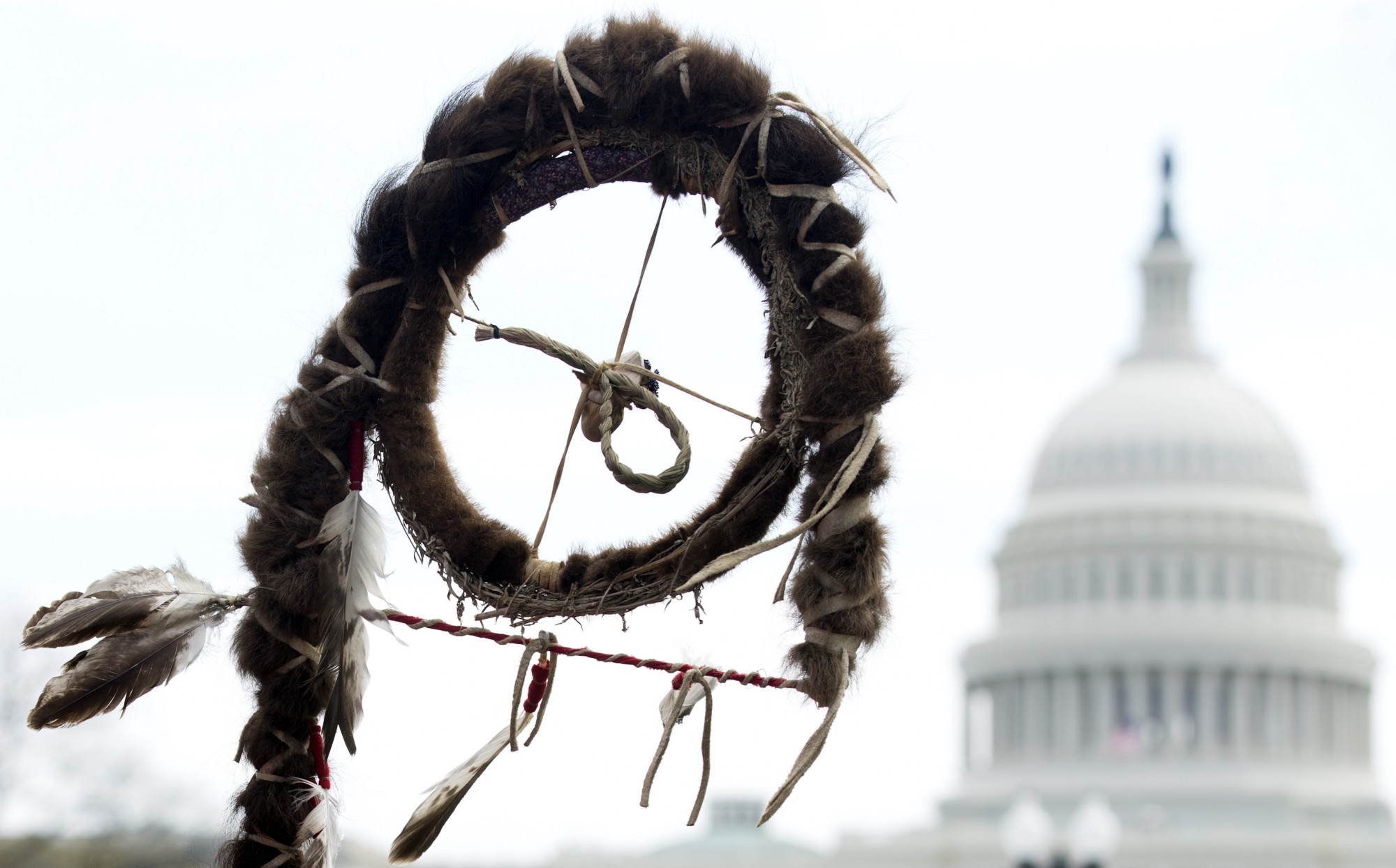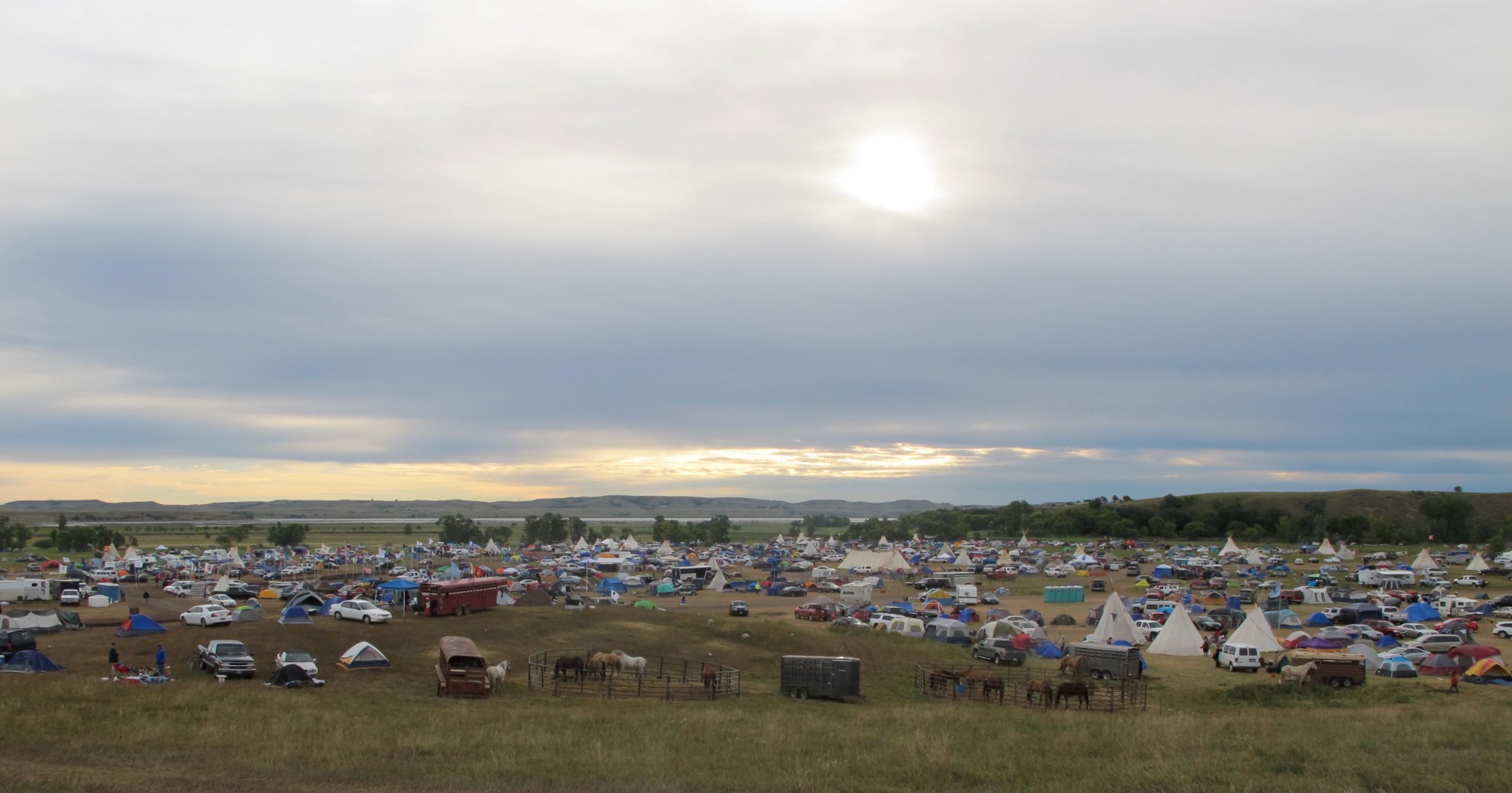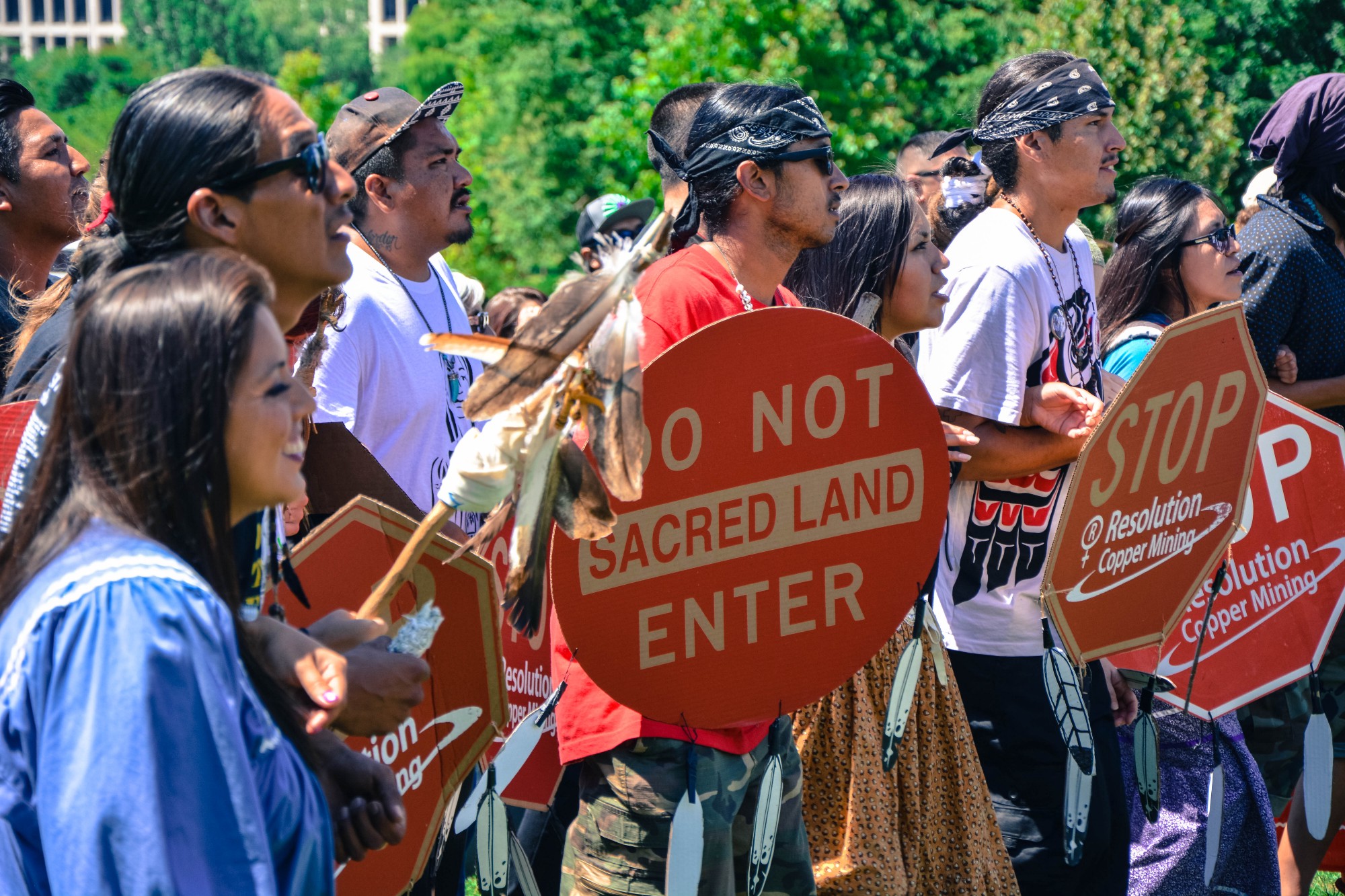Idle No More
– Artist’s Website –
Demonstrators in Canon Ball protest the Dakota Access Pipeline. CREDIT: Flickr/Joe Brusky
Demonstrators in Canon Ball protest the Dakota Access Pipeline. CREDIT: Flickr/Joe Brusky
North Dakota is just the beginning.
Masses of indigenous people and their allies descended on camps along Cannonball River this year to decry the construction of the Dakota Access pipeline, a series of 30-inch diameter underground pipes that, if built, would stretch 1,172 miles and carry half a million barrels of crude oil per day — right through lands Native groups call sacred.
 A Native American prayer stick is held near the capital during a Keystone XL protest in 2014. CREDIT: AP Photos/Manuel Balce Cenata
A Native American prayer stick is held near the capital during a Keystone XL protest in 2014. CREDIT: AP Photos/Manuel Balce Cenata
“Seeing all the tribes come out was just incredible,” Caro “Guarding Red Tarantula Woman” Gonzales, a 26-year-old Standing Rock protester and founding member of the International Indigenous Youth Council, told ThinkProgress. “We can do that for every single indigenous fight.”
 One of the camps near North Dakota’s Standing Rock Sioux reservation on September 9, 2016. CREDIT: AP Photo/James MacPherson
One of the camps near North Dakota’s Standing Rock Sioux reservation on September 9, 2016. CREDIT: AP Photo/James MacPherson
By the time Standing Rock rolled around, a spiritual network of indigenous people was already in full effect.
“Many of the people I met at Standing Rock I’ve been friends with on Facebook for years,” said Case, who has been a key organizer in Native Hawaiian activist circles.
“We prayed on each others’ mountains and made commitments to one another,” Case said, speaking over the phone just minutes after finishing a ceremonial raft ride down the river. “They have prayed for us — they’ve come out physically to Mauna Kea. So now it’s our turn.”
“The most important word here is alliances,” she said.
 Native protestors rally on Capitol Hill in 2015 to stop the construction of a copper mine in Oak Flat, Arizona. CREDIT: ThinkProgress/Jack Jenkins
Native protestors rally on Capitol Hill in 2015 to stop the construction of a copper mine in Oak Flat, Arizona. CREDIT: ThinkProgress/Jack Jenkins
“To introduce another spiritual element — I am a two spirit,” Gonzales said, referencing a Native American term used to describe gay, lesbian, bisexual, and transgender people in their communities. Although traditionally celebrated in many tribes, two-spirit people have not always been welcomed by modern indigenous people. Yet when Gonzales and others formed the International Indigenous Youth Council at Standing Rock, the majority of the leadership identified as two-spirit — a designation they link to their faith.
“My sacredness as a human is part of my tradition — myself as a protector, as a sacred protector,” she said. “There are a lot of two-sprits at [the Standing Rock] camp, and that is sacred too… We see that as integral to our activism.”
“There comes a time when people have a right to say no — and now is that time,” she added. “So we’re saying no, resoundingly, like the thundering sky.”
See Full Article at https://thinkprogress.org/indigenous-spiritual-movement-8f873348a2f5#.tadj0gz3k






